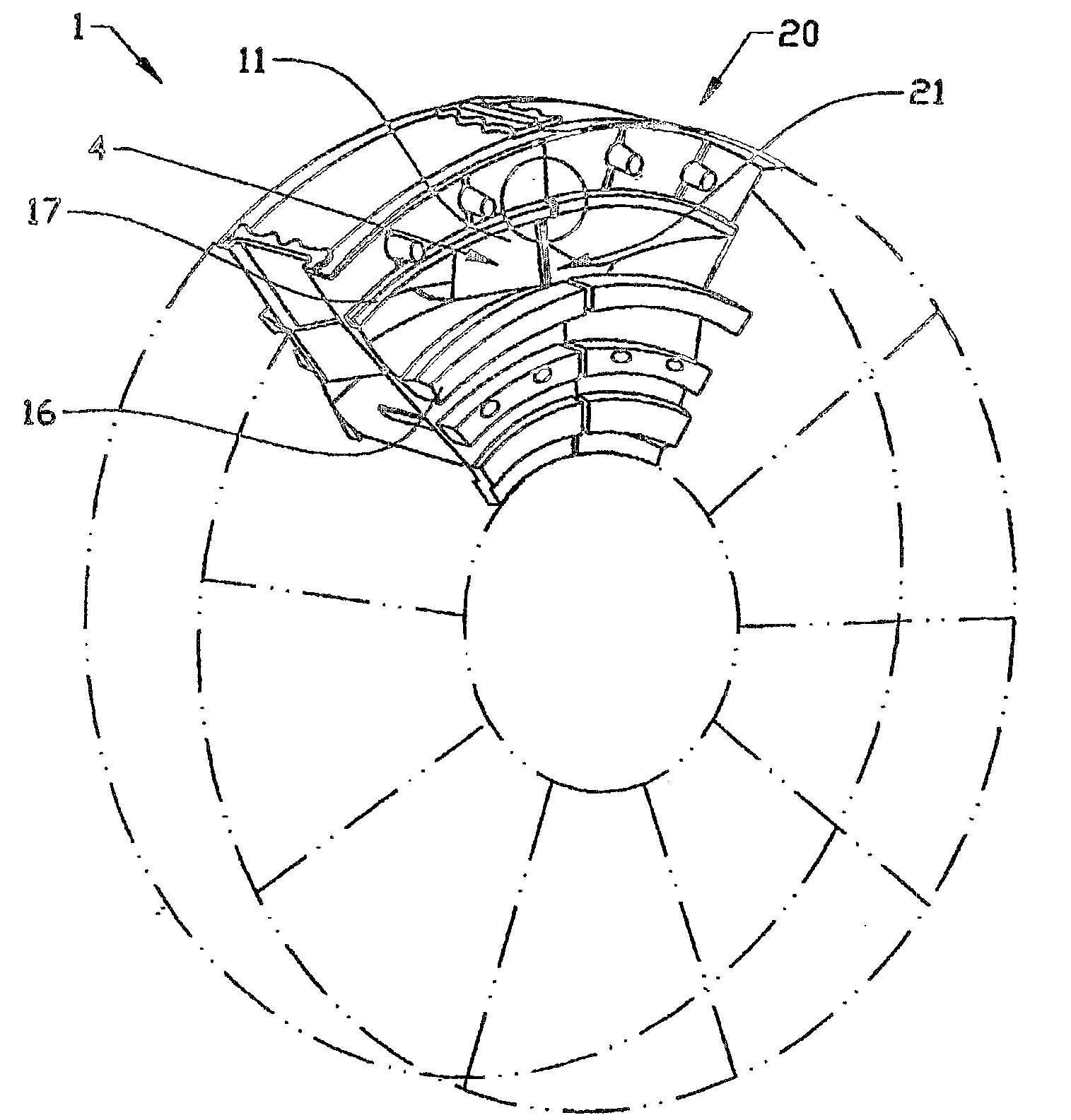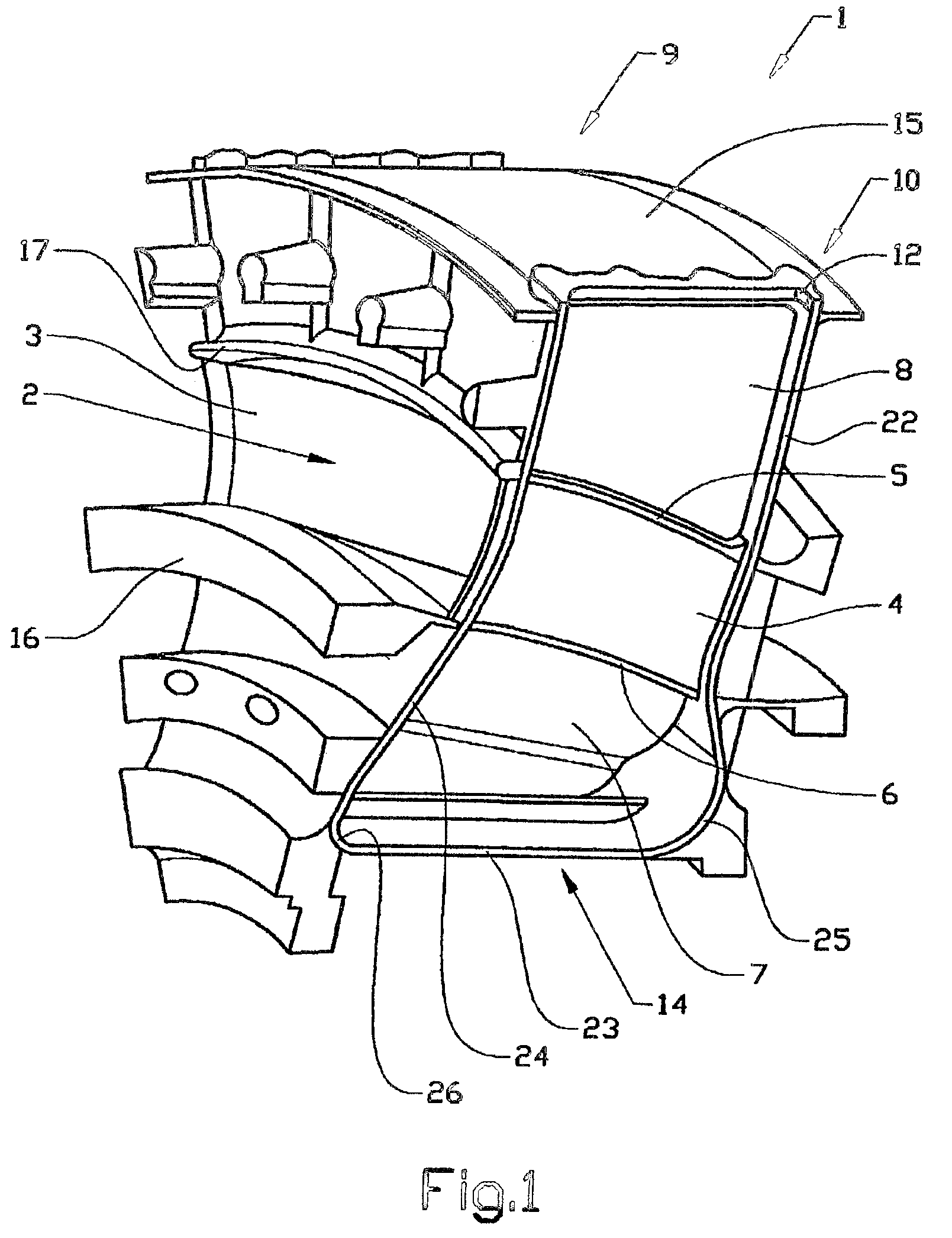Method of manufacturing a stator component
a technology of stator components and manufacturing methods, applied in non-electric welding apparatuses, machines/engines, electron beam welding apparatuses, etc., can solve the problems of large and complicated casting facilities, time-consuming and expensive operations, etc., and achieve less complex casting facilities, less complicated design, and efficient welding processes
- Summary
- Abstract
- Description
- Claims
- Application Information
AI Technical Summary
Benefits of technology
Problems solved by technology
Method used
Image
Examples
Embodiment Construction
[0020]FIG. 1 shows a cast sector 1 in a perspective view.
[0021]The sector 1 has a gas duct 2 that goes right through, principally in an axial direction. It is also possible to have one or more gas ducts in a radial direction for compressor flow (not shown), and also in certain cases fan flow.
[0022]The sector 1 has been cast with wall elements 4, 5, 6, 7, 8 that form a continuous structure in the radial direction in order to transfer loads. In the illustrated embodiment, the sector 1 comprises a first wall element 3 and a second wall element 4, which extend in the intended radial direction of the stator component and are arranged at a distance from each other in order to define between them the gas duct 2 in the direction of the circumference of the stator component.
[0023]When two sectors are joined together, the continuous wall structure 4, 5, 6, 7, 8 together with a corresponding wall structure 21 of an adjacent sector form a device 11 extending in the radial direction of the compo...
PUM
| Property | Measurement | Unit |
|---|---|---|
| circumference | aaaaa | aaaaa |
| distance | aaaaa | aaaaa |
| thickness | aaaaa | aaaaa |
Abstract
Description
Claims
Application Information
 Login to View More
Login to View More - R&D
- Intellectual Property
- Life Sciences
- Materials
- Tech Scout
- Unparalleled Data Quality
- Higher Quality Content
- 60% Fewer Hallucinations
Browse by: Latest US Patents, China's latest patents, Technical Efficacy Thesaurus, Application Domain, Technology Topic, Popular Technical Reports.
© 2025 PatSnap. All rights reserved.Legal|Privacy policy|Modern Slavery Act Transparency Statement|Sitemap|About US| Contact US: help@patsnap.com



